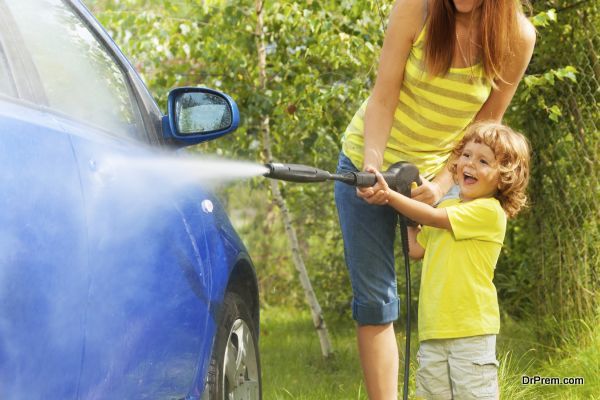If you’ve been thinking of converting your home to a greener one, you know the importance of getting your whole family on board. It starts with teaching them the ins and outs of an eco-friendly lifestyle. Everyone has to play their part to make it work. Here are just a few examples as to how you may be able to get your entire family—including the kids on board with a greener lifestyle.
Respecting Electricity
Forgetting to turn lights off or using electronic devices all day can really drain your bank account when you pay your power bill. Not only that, it can be bad for the environment. Respecting electricity usage is important for everyone. Try things like installing a programmable thermostat so your HVAC system is not overused when you’re not home. A smart hub that can control temperatures and outlet usage throughout the home is also an eco-savvy investment. Areas like California that get a lot of sun are perfect for solar energy. You can learn a lot by speaking to the pros at a local a solar company in San Diego CA about installing panels to bring free heat and power into your home.
Set Up A Recycling Center
 Almost everyone has been to a recycling center or knows what they are used for—sorting items that can be recycled and turned into something new. When you go to the store, everything you bring home is either trash or a recyclable. Even when you clean out your basement, you can either send it out to be donated or throw it all in your dumpster. Setting up bins in your garage or other areas in your home where you can sort items, such as aluminum, is the best way to get the most out of items that can be given new life in the future. Here are a few suggestions:
Almost everyone has been to a recycling center or knows what they are used for—sorting items that can be recycled and turned into something new. When you go to the store, everything you bring home is either trash or a recyclable. Even when you clean out your basement, you can either send it out to be donated or throw it all in your dumpster. Setting up bins in your garage or other areas in your home where you can sort items, such as aluminum, is the best way to get the most out of items that can be given new life in the future. Here are a few suggestions:
- Plastic – Check labels and separate items as per their recycling codes on packaging. Learn to differentiate between PET, PVC, HDPE and LDPE plastics. Teach your kids what the main codes are and how to identify them. Work on sorting and then place in reusable bins or bags before taking back to the recycling center.
- Paper – Most paper can be recycled and returned to your local recycling center. Have kids go through all of their old magazines and school papers before throwing them away.
- Metal – Electronics, cell phones and other metal items can be recycled. Try to separate the metals into different bins in order to prevent ground contamination from mercury and other e-waste toxins.
Once you have a designated area set up for quick recycling, it can be a learning tool for your family as well as a permanent and daily lifestyle change to reduce your carbon footprint.
Cut Back On Water Usage
Water is one of the main things in your home that you depend on every day. From drinking to brushing teeth to watering your garden, you can quickly and easily let your water usage get out of hand. It’s important to tell everyone in the family that they need to watch how much water they use. Starting with brushing your teeth, make sure to turn off the water when you’re doing it—this can cut back on a lot of water consumption, especially if you have a big family that brushes twice a day.
Reuse cups and plates as much as possible and hand clean rather than use your dishwasher. Consider installing Energy Star appliances in your home that are green-friendly. Having an on-demand hot water heating system to heat water can also save you money and reduce the amount of electricity you use. According to Energy.gov, the average family can save $100 or more per year with an ENERGY STAR qualified tankless water heater.
Borrowing Items And Bartering Services
 Setting up a system where you start borrowing rather than buying certain items can also help contribute to a greener lifestyle. This includes:
Setting up a system where you start borrowing rather than buying certain items can also help contribute to a greener lifestyle. This includes:
- Visiting the library to borrow books or reading them on your tablet rather than buying new.
- Make your own natural cleaning products from items you already have around your house.
- Borrow power tools and other items from your neighbors rather than buying new.
- Utilize a community garden or share your harvest with your neighbors.
- Take advantage of free-cycling groups in your area.
- Swap chores or services with friends and neighbors.
Always try to see if something can be used for something else before throwing away. Teach your children how to identify this rather than throwing things in the trash.
Going green sounds simple, but it takes a lot of hard work and dedication from everyone in the house. Getting them all on board is the first step to realize your dream of adopting a greener living home and lifestyle.
Article Submitted By Community Writer



